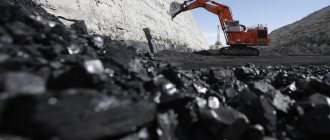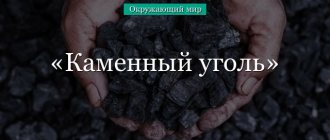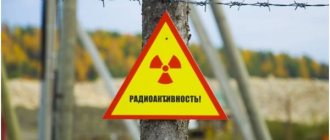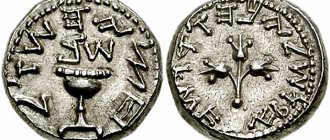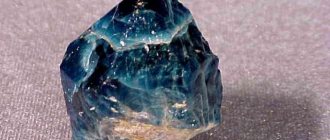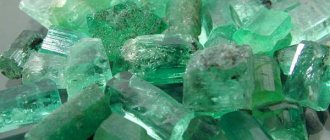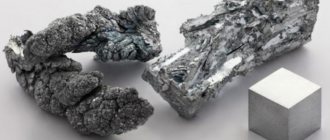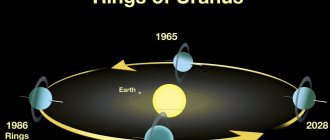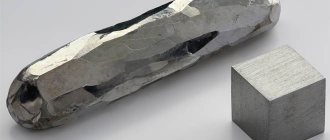The presence of sufficient mineral reserves is a guarantee of successful development of industry and economy. The prosperity of the region depends on deposits of mineral salts, oil, natural gas, diamonds, metals and coal. The well-being of the Perm region is directly related to the pace of mining. There are more than 500 names in the region.
Dolomites, gypsum, lime, marble, anhydrite, marl, and chrome ores are represented. As well as mineral pigments, sand, expanded clay, clay, strontium. Minerals of the Perm region, which are of paramount importance for the region:
- salt;
- oil.
In addition to them, the lands are abundant in a number of other sought-after minerals, chemical elements and metals:
- iron ore;
- coal;
- peat;
- diamonds;
- gold;
- volkonskoite;
- rubidium;
- bromine;
- iodine:
- strontium;
- platinum;
- anhydrite;
- limestones;
- gypsum;
- uvarovite.
The extraction of black gold in the Volga region began relatively recently, about a hundred years ago. The drilling of the first wells took place under the leadership of the scientist and geologist Pavel Ivanovich Preobrazhensky. The work was carried out several kilometers from the border of the rural settlement of Verkhnechusovskie Gorodki. In 1929, the first oil was obtained from the well.
A little later, minerals in the Perm region were discovered in the area of the settlements of Kueda, Dobryanka, Krasnokamsk and Polazny. The largest oil deposits are located near Chernushki and Os. Some deposits are still subject to development.
What natural areas are there in Eurasia?
What natural areas are there in Eurasia? art, names, geographical characteristics and table
- Arctic deserts of Eurasia, turning into tundras
- Taiga zone
- Broadleaf and mixed forests
- Steppes and forest-steppes
- Hardleaf subtropical forests
- Deserts and semi-deserts (temperate zone)
- Savannas and woodlands
13 Jul.
2022 Interesting materials:
What is the Samsung Daily app? What kind of briefing program? What kind of program is compass? What is region 136? What kind of connection is 790? What kind of connection starts with 747? What are durum wheat varieties? What kind of SMS filter service is it? What to pour into silicone mold? What does information processing do?
Black gold
The local oil has a rich charcoal color. It is viscous and thick. It lies at great depths. Therefore, the extraction of such a valuable mineral in the Perm region is associated with colossal financial investments. Geologists believe that black gold deposits appeared in these places during the Devonian period.
Advantages of Volga oil:
- excellent chemical properties;
- high quality;
- its processed products can be used in the aviation industry.
To date, exploration work has been completed at 200 fields in the region. Oil and gas production is underway.
Peat and coal
The largest deposit of this mineral is the territory adjacent to the village of Shabunichi. It supplies fuel to about 230 industrial enterprises in the region. Quarrying has been going on for over 70 years. There is also peat in Krasnovishersk, Gainy, Nyrob, Kochevo, and Chastinsky municipal district.
The colossal deposits of peat in these places are a strategic guarantor of the well-being of the fuel industry of the Volga region. The list of minerals mined in the Perm region also includes coal. But its number in the region is small.
Landscape features
The diversity of the region's topography explains the presence of so many types of natural resources. The territory of the region is bordered by plains and mountain ranges. Salts and other sedimentary rocks appeared in the lands of the Volga region during the existence of the Perm Sea. The reservoir was located in the region more than 300 million years ago.
Its disappearance is associated with the active growth of the Ural Mountains. Stone plateaus crushed the Permian Sea, which led to the gradual drying out of the reservoir. The water disappeared, but the minerals remained. Today they are mined and used in various industries.
Ore
This type of mineral in the Perm region is mined a few kilometers from the village of Sarany. It is the only one in the entire region. In the Volga region, the products of local ore mining enterprises are highly valued.
Iron ores have been mined in these parts for more than two hundred years. Peter I began to develop the local deposits. His geologists carefully explored the foothills of the Urals. They obtained 500,000 pounds of iron. Ores are popular minerals and rocks in the Perm region. Only in the era of Peter the Great, a huge number of guns, cannons, cannonballs and other military supplies were cast from them.
Mineral salts
Residents of the region began to receive their first salt hundreds of years ago. Scientists and historians are still guessing about the exact date of the beginning of mining in the Perm region. The name of the person who came up with the idea of boiling the salt also remains unknown. Only written documents mention certain merchants Kalinnikovs, who specialized in boiling salt.
Their craft was adopted by the Stroganovs, who managed to oust products from Balashikha and Vychegda from the Russian salt market. The region produces not only table salt, but also potassium salt. According to information from a textbook on the environment for 4th grade, minerals in the Perm region are concentrated in the Verkhnekamsk and Krasnovishersky districts. The lands near the settlements of Bereznyaki and Solikamsk are abundant in potassium salts.
Local chemical industry enterprises specialize in their processing and production of mineral fertilizers. They produce industrial and edible salt. They supply raw materials for the titanium-magnesium plant.
Diamonds
The share of mining of precious stones in the subsoil of the region is no more than 0.2%. Their value exceeds 20% of the total valuation of all diamond products obtained on the territory of the Russian Federation. Perm stones are of high quality. Eight out of ten diamonds mined in the Volga region are used in the jewelry industry.
Precious minerals of the Perm region do not have a pronounced shade. They have a high degree of transparency. Their faces are distinguished by smooth, rounded edges. Fifteen years ago, a 35-carat diamond was discovered in the region. The length of its longest side is 20 mm. The size of the other part is 17 mm.
According to information published on the pages of the Perm Regional Server, minerals are mined today in the following areas:
- Krasnovishersky.
- Gornozavodsky.
- Cherdyn.
- Krasnokamsk.
- Alexandrovsk.
Volkonskoit
The Volga region is the only region in the world whose lands have industrial deposits of this natural material. In addition to Russia, volkonskoite is found on the African continent. This stone is used to produce bright green paint. It does not fade in the sun, does not lose its consumer properties over time, does not warp or deform.
The pigment shows resistance to acids, alkalis and mineral oils. It retains its original color for centuries. Volkonskoite has a lot of fans. The most famous is the painter Pablo Picasso. He actively used paints made from this mineral.
Areas of application of volkonskoite:
- softening hard water;
- oil purification;
- refining;
- production of enamel;
- glaze production;
- ceramic craft;
- pottery.
The mineral stone was found at the beginning of the 19th century. Its deposits were discovered in the vicinity of the village of Efimyat. There are several versions of the origin of this unusual name for the stone. It is believed that the natural mineral was named in honor of Maria Nikolevna Volkonskaya, the wife of the Decembrist Sergei Volkonsky. If you believe this version, then the revolutionary’s wife crossed the territory of the Perm Territory twice.
Minerals of the Perm region: complete list, features and location
From Masterweb
The presence of sufficient mineral reserves is a guarantee of successful development of industry and economy. The prosperity of the region depends on deposits of mineral salts, oil, natural gas, diamonds, metals and coal. The well-being of the Perm region is directly related to the pace of mining. There are more than 500 names in the region.
Dolomites, gypsum, lime, marble, anhydrite, marl, and chrome ores are represented. As well as mineral pigments, sand, expanded clay, clay, strontium. Minerals of the Perm region, which are of paramount importance for the region:
- salt;
- oil.
In addition to them, the lands are abundant in a number of other sought-after minerals, chemical elements and metals:
- iron ore;
- coal;
- peat;
- diamonds;
- gold;
- volkonskoite;
- rubidium;
- bromine;
- iodine:
- strontium;
- platinum;
- anhydrite;
- limestones;
- gypsum;
- uvarovite.
The extraction of black gold in the Volga region began relatively recently, about a hundred years ago. The drilling of the first wells took place under the leadership of the scientist and geologist Pavel Ivanovich Preobrazhensky. The work was carried out several kilometers from the border of the rural settlement of Verkhnechusovskie Gorodki. In 1929, the first oil was obtained from the well.
A little later, minerals in the Perm region were discovered in the area of the settlements of Kueda, Dobryanka, Krasnokamsk and Polazny. The largest oil deposits are located near Chernushki and Os. Some deposits are still subject to development.
Geological characteristics
The territorial location of the region is in the east of Russia, as well as in the west of the Urals. A small part of the region belongs to Asia, and a small part of the territory is in Europe. The territory has moderate climatic conditions. The winter season is long and harsh. The resulting Ural Mountains influenced the diversity of minerals in the Perm region. Most of the territory is occupied by the East European Platform. Its territory is predominantly flat. The predominant minerals are predominantly of the sedimentary type. In its western part there is a Middle Jurassic subformation, where deposits of construction resources are concentrated - sands, clays, gravel, siltstones.
The rocks of the Perm region were formed a huge amount of time ago, sedimentary rocks accumulated and a crystalline structure formed. The Lower Triassic terrigenous subformation is characterized by the same mineral composition, but marl is sometimes found among the minerals. Clays and sandstones predominate. The central part of the Perm Territory is adjacent to the Kazan terrigenous subformation, where mudstones are also found. This part also has a favorable geological structure for the formation of hydrocarbon minerals. The strip extends from the upper third to the very south of the Perm region.
Minerals of the Perm region: complete list, features and location
The presence of sufficient mineral reserves is a guarantee of successful development of industry and economy. The prosperity of the region depends on deposits of mineral salts, oil, natural gas, diamonds, metals and coal. The well-being of the Perm region is directly related to the pace of mining. There are more than 500 names in the region.
Dolomites, gypsum, lime, marble, anhydrite, marl, and chrome ores are represented. As well as mineral pigments, sand, expanded clay, clay, strontium. Minerals of the Perm region, which are of paramount importance for the region:
In addition to them, the lands are abundant in a number of other sought-after minerals, chemical elements and metals:
The extraction of black gold in the Volga region began relatively recently, about a hundred years ago. The drilling of the first wells took place under the leadership of the scientist and geologist Pavel Ivanovich Preobrazhensky. The work was carried out several kilometers from the border of the rural settlement of Verkhnechusovskie Gorodki. In 1929, the first oil was obtained from the well.
General information about the Perm region
The Perm region is part of the Volga Federal District. Was formed on December 1, 2005. Previously called the Perm region, to which the Komi-Permyak Autonomous Okrug was annexed.
In the Komi language, the region is called the word “Parma”, which means a hill covered with spruce forest. It is believed that the name “Perm” comes from the word “Parma”. Residents of the region are called Permyaks.
Geographically, the Perm region belongs to the Western Urals and is located at the junction of Europe and Asia. Its area is 160,600 square meters. km, which is approximately 1% of the area of Russia.
